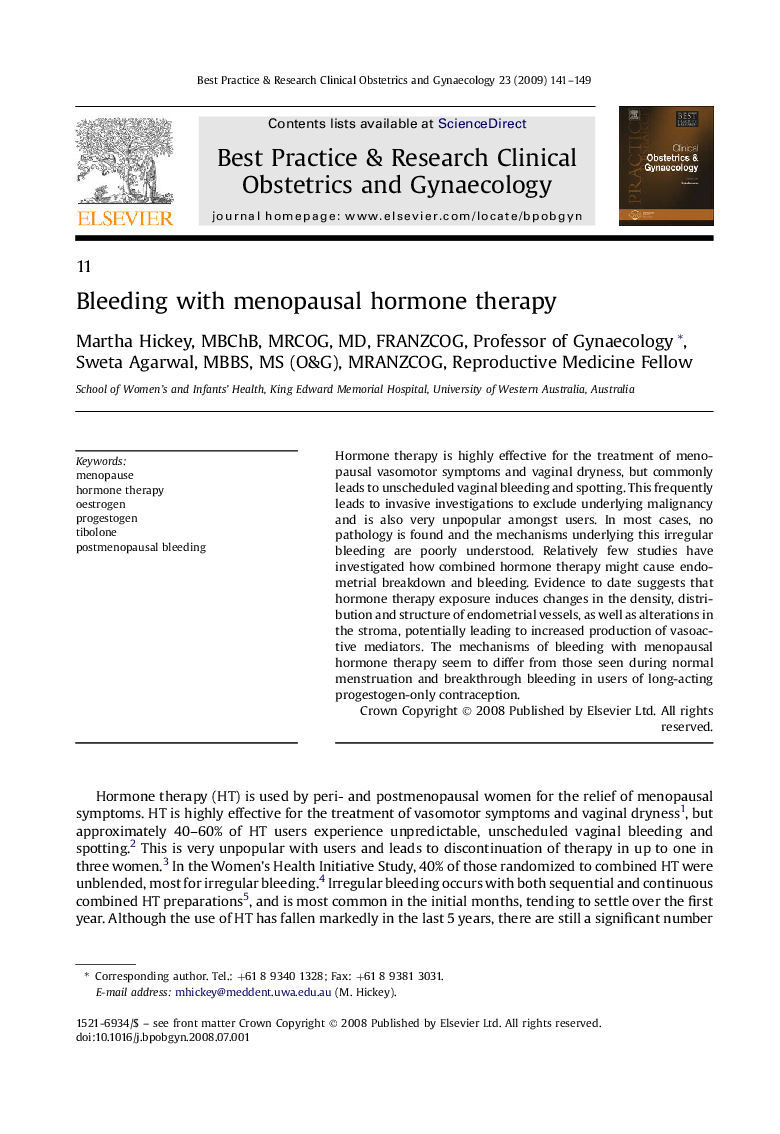| Article ID | Journal | Published Year | Pages | File Type |
|---|---|---|---|---|
| 3907870 | Best Practice & Research Clinical Obstetrics & Gynaecology | 2009 | 9 Pages |
Hormone therapy is highly effective for the treatment of menopausal vasomotor symptoms and vaginal dryness, but commonly leads to unscheduled vaginal bleeding and spotting. This frequently leads to invasive investigations to exclude underlying malignancy and is also very unpopular amongst users. In most cases, no pathology is found and the mechanisms underlying this irregular bleeding are poorly understood. Relatively few studies have investigated how combined hormone therapy might cause endometrial breakdown and bleeding. Evidence to date suggests that hormone therapy exposure induces changes in the density, distribution and structure of endometrial vessels, as well as alterations in the stroma, potentially leading to increased production of vasoactive mediators. The mechanisms of bleeding with menopausal hormone therapy seem to differ from those seen during normal menstruation and breakthrough bleeding in users of long-acting progestogen-only contraception.
